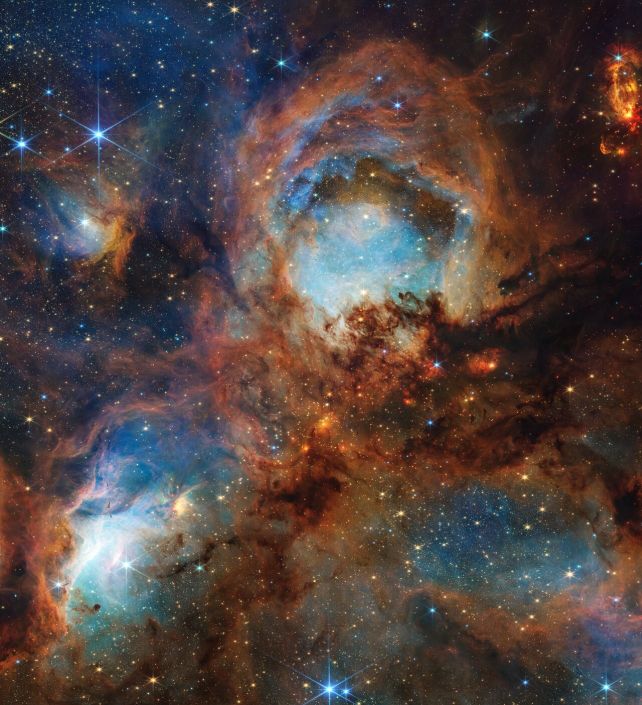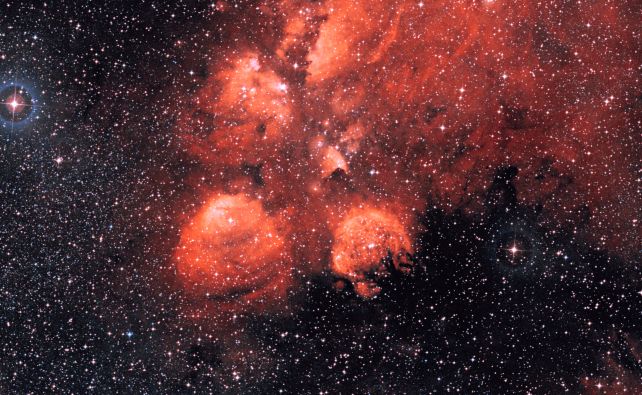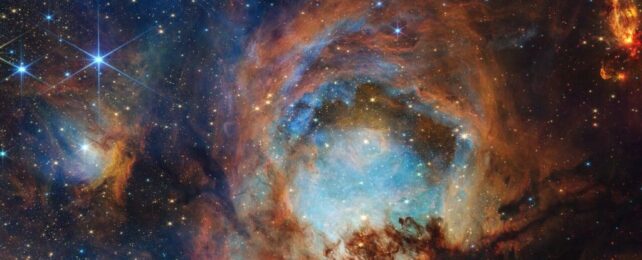Cats are a cosmic mystery, creatures of stardust and moonlight. We may not be able to solve their endless ineffability, but JWST is not so constrained.
To celebrate its third year of operations, the powerful space telescope has peered into the heart of an empyrean essence of cat: the Cat's Paw Nebula, a giant complex molecular cloud named for its resemblance to a set of enormous toe beans.

It's not just a squishy-looking temptation: the Cat's Paw Nebula, located some 4,000 light-years away in the constellation Scorpius, is the site of ongoing star formation, where clumps of material are engaged in the act of transforming into massive stars, obscured inside huge clouds of dust and molecular gas.
Infrared light, however, can penetrate these clouds where other wavelengths are scattered off the particles. As JWST is an infrared telescope, it is able to peer through the dust to see what's taking place inside: an excellent tool for investigating the wild process of star formation.
Related: A Stunning New 3D Model of The Cat's Eye Nebula May Help Us Solve Its Mysteries

This process can be seen at different stages throughout the scene presented by the telescope's near-infrared camera (NIRCam). In the upper middle 'chamber', a structure nicknamed the Opera House, a baby yellow star can be seen illuminating and blowing away the dust around it – one of the final stages of star formation.
Meanwhile, in the thick brown dust in the middle of the image, glowing, fiery red blobs are sites still obscured by the nebular material in which star formation is actively underway. An orange region in the upper right with a low star count is a spot where star formation is underway in earlier stages.

The opalescent blue glow illuminating the hollow areas comes from the light of the stars scattered throughout the cloud, while filaments of dust through which little light penetrates suggests a density high enough for the star formation process to be just beginning: dense knots of gas collapsing under gravity to form the seeds of baby stars.
Meanwhile, blue-white stars gleam with crackling clarity – those are the fully formed stars that have blown away their surrounding material to shine their light freely through space.

You can download wallpaper-sized versions of the new image on the European Space Agency JWST website.
